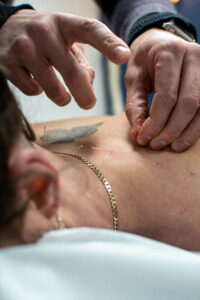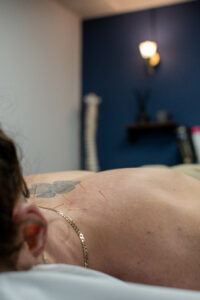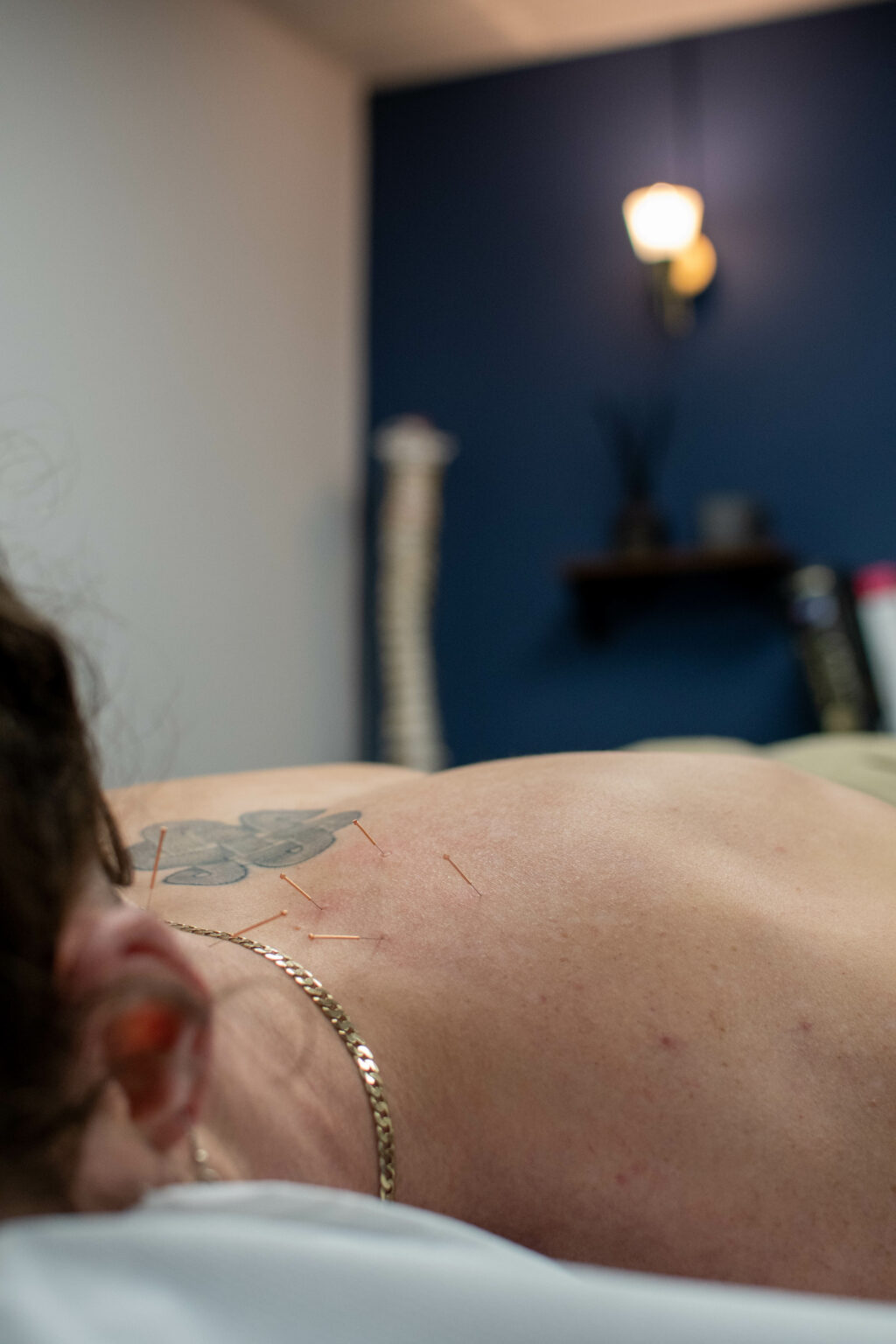The Benefits of Dry Needling Acupuncture
Are many. Relief from nausea, back pain, headaches, migraines, musculoskeletal pain and postoperative pain to name just a few. Maybe you’ve had acupuncture and experienced the feelgood factor for yourself. Or perhaps you know people or have heard of the ways it can help and want to know if it’s right for you. Read on…
What is Acupuncture?
Based on ancient Chinese acupuncture, dry needling acupuncture involves inserting fine sterile needles into areas of pain in the body.
Original Chinese acupuncture traditionally works on Qi (vital energy) points. If the Qi is blocked energy can’t flow correctly and you get pain or dysfunction. The therapist uses needles to unblock important pathways and to re-establish the flow of Qi to relieve the discomfort.
A broader based approach to health overall Chinese acupuncture deals with generalised ill health using the tongue or even the shape of your ears as an indicator of your health. Much safer than eastern acupuncture, dry needling acupuncture doesn’t work that way instead using evidence based anatomy, physiology and current medical models, as opposed to yin, yang and Qi.
Dry needling acupuncture, alternatively named Western Medical Acupuncture, was developed in the 1970’s when researchers were doubting the traditional Qi and meridian approach. Based on proven, effective aspects of the traditional approach they formed a scientific basis for a western version. The best of both worlds.
That said, though recognised and recommended by The National Institute for Health and Care Excellence (NICE) for the treatments of migraine, tension headaches and lower back pain, to this day there is no uniform version of the westernised version, though all are effective at treating musculoskeletal pain.
There have also been benefits shown in applying dry needling acupuncture on the head (termed scalp acupuncture) to treat paralysis in stroke victims. For more information read my blog scalp acupuncture.
How it Works
At the Movement and Wellbeing Clinic, we only use the safer, evidence based westernised version.
Such is the weight of scientific evidence gathered in support of acupuncture that nowadays it’s considered as conventional medicine and is widely used in a variety of issues such as musculoskeletal pain, postoperative pain and nausea.
The Science of Acupuncture
The needles stimulate the nervous system, this realises neuropeptides (which transmits nerve signals) and increases blood flow to the nerve. The resulting response in the spinal cord and brain causes a release of opioid peptides and serotonin which makes you feel good and reduces the signal of pain by inhibiting the nerve pathway to that area of the body.
As complicated as this might sound the benefits are many and effective delivering comfort after around 10 minutes of treatment.
The treatment has been shown to be beneficial for:
• Musculoskeletal pain
• Tension type headache
• Knee pain
• Post operative pain
• Nausea
What happens During Acupuncture Treatment?
First you’ll have an assessment. This is focused on figuring out if the your pain is coming from the muscle or from the spine (a slipped disc etc). If the pain source is from the spine the therapist will look to place the needle in the musculature around the spine (the source if the pain) rather than over the pain itself.
If the pain is from the muscle, the therapist will palpate and establish the ‘tight’ region, ready for the needle entry point. Despite the muscle’s tenderness, you’ll feel no additional pain as the needle is being inserted.
Once inserted, you’ll lie still for 10/15 minutes, the length of time necessary for a successful treatment.
On a personal note, when a patient is in a lot of muscular pain I usually do acupuncture therapy and then a manipulation as a way to minimise pain and release the tension.
Questions? Concerns?
Please don’t hesitate to contact the clinic on:
0161 209 3980
info@movementandwellbeingclinic.co.uk
